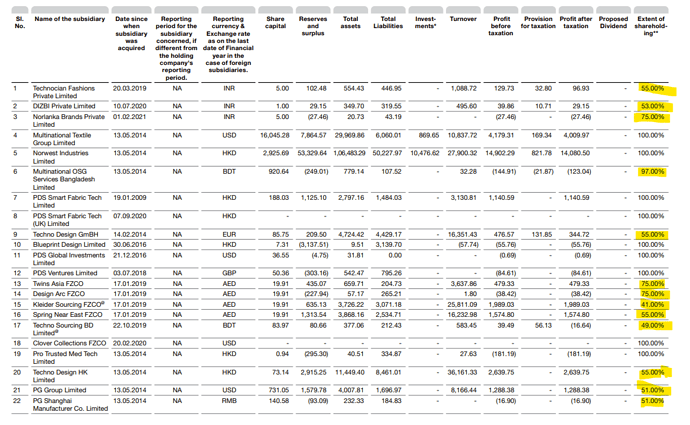For those of you who enjoy reading Prof. Bakshi and the Safal Niveshak blog, professors at Harvard wrote a case study on PDS! This is a really nice read, and a refreshing difference to the usual analyst report style take on a company.
They sat down and spoke with management, and the point of this article was to create a case study for the classroom, and not dissect a business as an investment candidate. However, we do have more candid answers for some of the questions asked by people in this thread.
Case study is behind paywall.
https://www.hbs.edu/faculty/Pages/item.aspx?num=58910
Summary and takeaways:
- Industry changed immensely from the Rana Plaza collapse / fires in Bangladesh, earlier post is definitely on the right track: PDS Limited - A platform for entrepreneurs - #10 by Chins
- In the wake of these fires, and the stricter compliance requirements in the industry, management is quoted to have said: “Some of the big retailers—Gap, Levi’s, H&M—won’t work with sourcing companies anymore. They will only work with companies that own factories.”
Aside: Companies like Primark, H&M are now publishing transparent data on all of their partner factories. They require factories to have worked with them for atleast a year, and follow compliance standards. They also require factories to disclose data, such as the breakup between men and women employed.
Here’s PDS on Primark’s sourcing list https://globalsourcingmap.primark.com/:
- The reason why we have 100 subsidiaries and a crucial piece of business understanding:
As he grew the Group, rather than acquire companies in the way competitors like Li & Fung had grown, he targeted successful individuals with extensive industry experience. They were often independently running sizeable P&Ls within a larger competitor firm and had varied work experience in sales and marketing, merchandising, design and product development, buying, and manufacturing. Seth brought them in to set up individual subsidiaries under the PDS umbrella, offering compensation and Group support, including financing, IT, and other Group best practices.
- They therefore headhunt people who are senior management/critical to other businesses, and they turn them into entrepreneurs under the PDS umbrella. Requirements for these people are to add product categories, expand footprint into new markets, or bring in a top dollar client.
Aside: this then explains why a lot of their subsidiaries are JVs, or not 100% owned subsidiaries. Each has an entrepreneus as a profit sharing partner.
-
Lots of details about how Mr. Seth picks the entrepreneurs, what kind of initial funding they get, remuneration, and how they have a three year timeline for independent cash flows. Success rate is currently 80%, with the remaining being written off.
-
They have extensive non-compete clauses with existing clients, and honour these with respect to new verticals/products.
Crucial business insight - the platform model we’ve spoken about in this thread so far is between customers and sourcing partners. However, the platform model management keeps referring to is the hub and spoke model with entrepreneurs.
-
Great story about how this model worked initially. and then started to develop problems between 2014 - 2017: had many entrepreneurs under them, and each unit worked independently. This meant lots of missed contracts, as each subsidiary negotiated sourcing for itself, and not the entire group. Top management worked to improve backend, and build a better model.
-
2017 was the turning point for the business, they sat down together and fleshed out corporate structures, how to incorporate transparent decision making across the group, and a better framework. Also, all subsidiaries reported that clients wanted a manufacturing company, not a pure sourcing company. This lead to increasing efficiencies, and the decision to start manufacturing in Bangladesh.
-
In 2018, they brought on multiple key people to do a full diagnostic of PDS. They set up a system where subsidiaries had quarterly forecasts, annual budgeting, management information systems, and set targets for KPIs. They also brought on a former L&F president to benchmark subsidiaries. They also have teams that do internal suprise audits on the subsidiaries to ensure 100% compliance
I believe these are the reasons for the improvement in ratios seen below:
Campbell, Dennis, Tarun Khanna, and Kerry Herman. “PDS: Ring-Fencing the Ranch.” Harvard Business School Case 721-361, September 2020. (Revised November 2020.)
Disclosure: invested, had a wonderful time learning more about the company.



